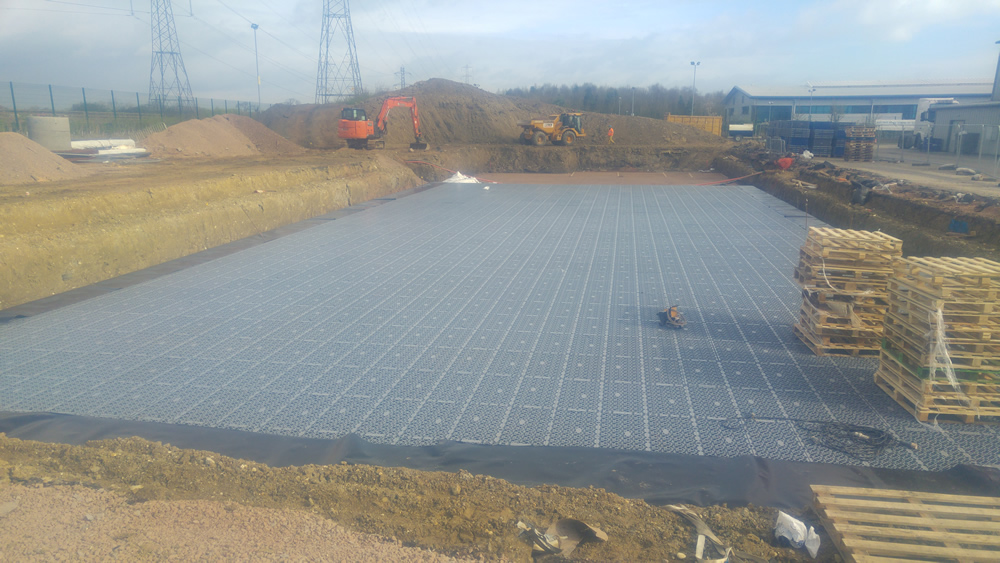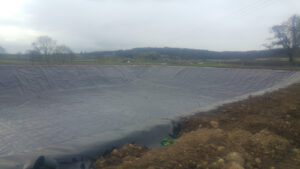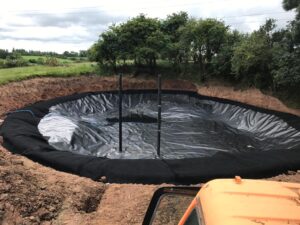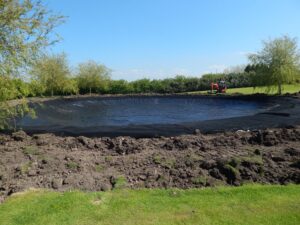Attenuation ponds, often referred to as stormwater attenuation or detention ponds, play a crucial role in managing excess water runoff and preventing flooding in urban and industrial areas. These purpose-built ponds serve as temporary storage for rainwater, controlling its flow and mitigating the risk of overwhelming drainage systems during heavy rainfall. Beyond flood prevention, attenuation ponds offer environmental benefits by filtering pollutants and supporting local ecosystems.
Understanding Attenuation Ponds
Attenuation ponds are engineered structures designed to slow down the flow of stormwater, temporarily storing it and gradually releasing it at a controlled rate. These ponds are strategically placed in areas prone to flooding or where there is a risk of stormwater overwhelming drainage systems.
Functions of Attenuation Ponds
Flood Prevention
During heavy rainfall, attenuation ponds collect excess water, preventing it from entering drainage systems too rapidly. This controlled release helps mitigate the risk of flooding downstream.
Water Quality Improvement
As stormwater collects in these ponds, sediments and pollutants settle, allowing the water to undergo natural filtration. This process helps remove debris, sediment, and pollutants, improving the quality of water before it is discharged.
Ecosystem Support
Attenuation ponds can foster biodiversity by providing habitats for aquatic plants and wildlife. They serve as mini-ecosystems, supporting various species of plants and animals.
Components of Attenuation Ponds
Inlet Structure
The inlet structure controls the flow of stormwater into the pond, regulating the rate at which it fills during rainfall events.
Outlet Structure
An outlet structure manages the release of water from the pond, ensuring a controlled discharge rate into downstream watercourses or drainage systems.
Sedimentation Basin
This section of the pond allows sediments carried by stormwater to settle, preventing them from entering downstream water bodies.
Importance of Maintenance
Vegetation Management
Regular maintenance involves managing vegetation in and around the pond. Properly maintained vegetation helps stabilise banks, prevent erosion, and enhance the pond’s ecosystem.
Inspection and Cleaning
Periodic inspections and cleaning ensure that the pond functions effectively. Removing accumulated debris and sediment is crucial for maintaining its capacity and efficiency.
Conclusion
Attenuation ponds stand as integral components of urban and industrial stormwater management systems, providing a multi-functional approach to water management and environmental conservation. Their ability to mitigate floods, improve water quality, and support biodiversity makes them essential in sustainable urban planning and environmental protection.
By implementing proper design, regular maintenance, and effective management strategies, attenuation ponds can continue to serve as invaluable assets in managing stormwater, reducing flood risks, and preserving the quality of our water resources while nurturing local ecosystems.
To find out more about our products and services and how we can help you, please contact us using the below –
Tel: 01695 228626
Email: enquiries@enviroseal.co.uk





